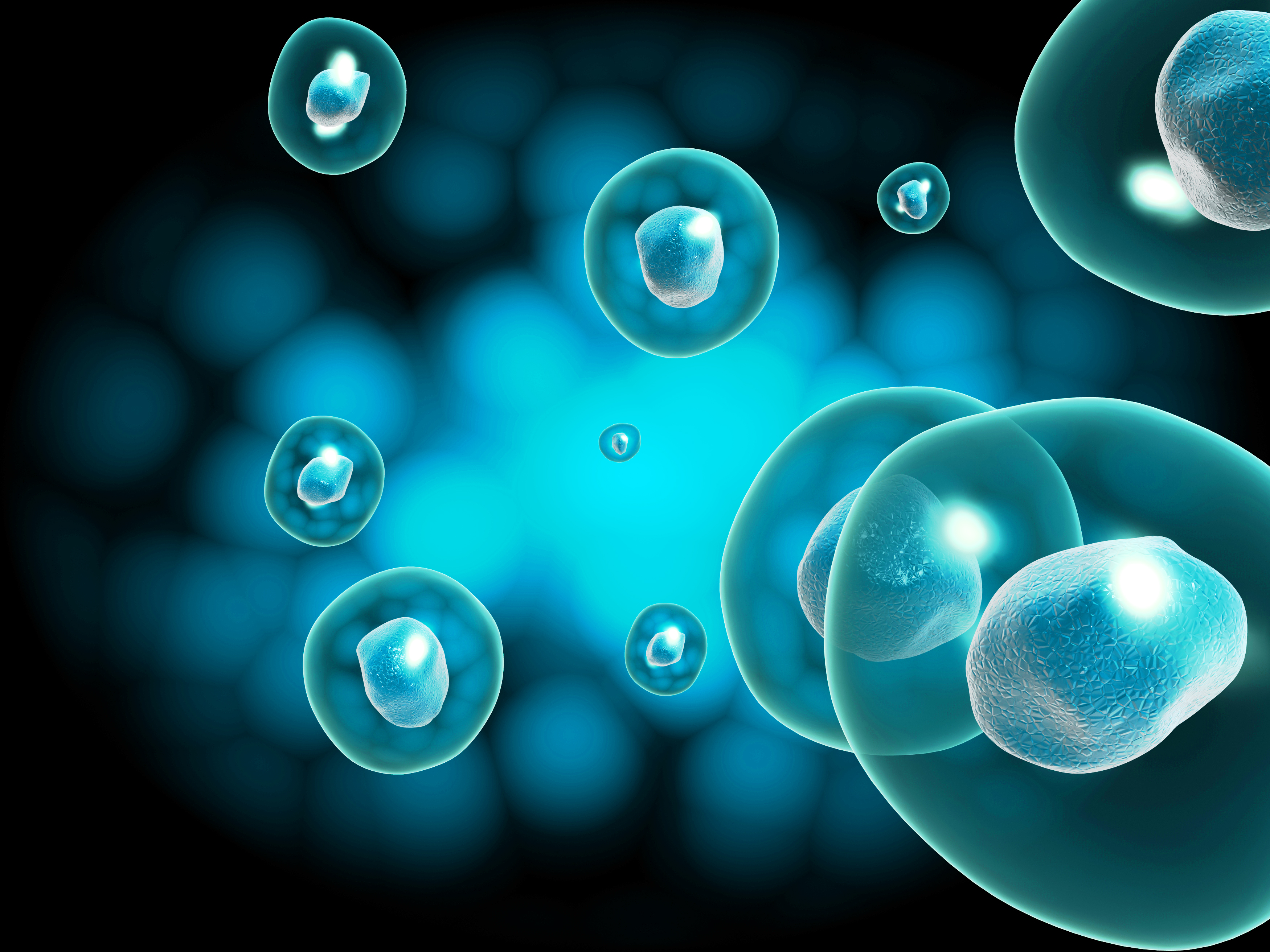STEM CELL
Frequently Asked Questions
Q: What is an umbilical cord blood unit?
A: A cord blood unit is the term used for the blood collected from the umbilical cord after a baby is born. The cord blood collection process is not painful to either the mother or baby and takes only a few minutes. Cord blood is rich in blood-forming cells that can be used in transplants for patients with leukemia, lymphoma and many other life-threatening diseases.
Q: Are cord blood stem cells different than other types of stem cells?
A: Yes. Cord blood stem cells are unique in a number of ways. Because these stem cells are the “youngest” form of stem cells, they more easily adapt, which means that the donor and recipient do not have to be a perfect match. This sets cord blood apart from bone marrow stem cells, the most commonly used source of stem cells. Bone marrow stem cells are not readily available and collection is painful.
Q: What is the difference between private cord blood banking and public cord blood donation?
A: Private cord blood banking requires a fee so that your baby’s cord blood is banked for his/her own future use or use for a family member. Public cord blood donation, means that your baby’s cord blood is genetically cataloged and immediately available to doctors to treat patients or to be used in clinical trials.
Q: Are umbilical cord blood stem cells the same as embryonic stem cells?
A: No. Embryonic stem cells are taken from an unborn fetus. Umbilical cord blood is collected after the baby is born. Cord blood is non-controversial because neither the baby nor the mother is harmed from the collection process.
Q: Will it cost me to donate cord blood?
A: There is no cost for donating. The cost of processing, testing and storing the cord blood is covered by Celebration Stem Cell Centre.
Q: Who will use my child’s donated cord blood?
A: Donated cord blood can be used to treat a long list of diseases and for medical research in clinical trials. Many patients in need of a bone marrow transplant can also utilize cord blood for treatment. Since cord blood does not have to match a patient’s tissue type as closely as donated bone marrow does, a match is more easily found. Doctors will select a cord blood unit that matches the patient and administer the transplant in a hospital or surgery center.
Q: Why didn’t my doctor talk to me about cord blood options?
A: Doctors are very busy and cord blood banking information is not a priority for physicians. Many may not be well-versed in the benefits of cord blood preservation and research. In 2007, legislation was passed in Arizona that requires healthcare professionals to ask expectant mothers if they plan to bank their baby’s umbilical cord blood. The Celebration Stem Cell Centre is the only local storage bank that accepts donated cord blood and offers private banking.
Q: What are the risks of donating cord blood?
A: The donation of the cord blood does not harm the baby or mother. It is considered a safe medical procedure. The cord blood is collected after the birth of the baby; therefore, it will not interrupt the birthing experience. There is a very small window of time available for collection of the cord blood. It is necessary to contacting us before the 34th week of pregnancy to ensure you qualify to donate.
Q: Why don’t more people donate cord blood?
A: Unfortunately, cord blood donation is not a standard of care in all parts of the country, and because of this, many women are unaware of their right to preserve or donate their child’s cord blood. Of the four million births in the United States each year, 97% of women do not donate or bank their child’s cord blood and it is discarded as medical waste. Celebration Stem Cell Centre is dedicated to providing unbiased, factual information regarding cord blood and the need to preserve it.
Q: What is cord tissue?
Cord tissue is the actual umbilical cord. Cord tissue contains Wharton’s Jelly. Wharton’s Jelly is an abundant source of Mesenchymal Stromal Cells (MSCs).
Q: What are cord tissue stem cells?
Cord tissue stem cells, or Mesenchymal Stromal Cells (MSCs), are the “building blocks” of the body’s skeletal and connective tissues. They have also shown the ability to differentiate into coronary tissue, hepatic tissue and more.
Q: What is the difference between cord blood stem cells and cord tissue stem cells?
Cord blood and cord tissue yield two vastly different types of stem cells that can potentially be used to treat different diseases and conditions within the body. Cord blood stem cells are called Hematopoietic Stem Cells (HSCs). The primary focus in research with HSCs has been on blood and immune system disorders. The stem cells derived from cord tissue are called Mesenchymal stromal cells (MSCs). Researchers have focused their efforts on connective tissue disorders and regenerative medicine with this kind of stem cell. Saving or donating both cord blood and cord tissue will provide your family and recipients in need with the widest potential scope of treatment options.
Q: How will cord tissue stem cells be used?
Cord tissue stem cells (MSCs) represent the most advanced, cutting-edge discoveries in regenerative medicine today. With over 300 MSC clinical trials in progress, scientists predict an explosion of new therapies will emerge, including routine treatments for diabetes, multiple sclerosis, stroke, heart failure, cirrhosis, bone fractures, autoimmune diseases and many more.
Q: Can cord tissue stem cells be used to treat adults?
Yes. Cord tissue stem cells can be expanded, which multiplies the number of viable stem cells to doses that are suitable for an adult transplant. FAQ Placental Tissue
Q: Are there options for banking placental stem cells?
Just as it is possible to bank umbilical cord blood and cord tissue, there are options available to bank blood and tissue from the placenta.
Q: What is placental blood?
Placental blood is the blood that remains within the blood vessels of the placenta after the baby is born. It is collected after cord blood collection has been completed. Placental blood contains similar cells to those found in the cord blood, including hematopoietic stem cells (cells which make blood cells).
Q: What makes placental blood unique?
The placenta contains a higher concentration of certain stem cells, and in more immature stages of development when compared to cord blood. This is important because the number of stem cells used in treatment has been linked to transplant outcome (the more the better), and more immature cells are less likely to invoke a graft-versus-host response in the transplant recipient. Placental blood also contains a greater fraction of a special type of stem cell, called mesenchymal stromal cells (MSCs), than cord blood, and these cells are currently being studied around the world for a possible role in regenerative medicine, which aims to use these special cells to repair or replace damaged or diseased cells or organs.
Q: Is there a use for placental tissue?
Tissue from the placenta contains abundant MSC and MSC-like cells which are being studied in regenerative medicine. MSC and MSC-like cells are currently being studied in variety of clinical settings for conditions such as Crohn’s disease, type 1 and type 2 diabetes, heart failure, diabetic foot ulcer, amyotrophic lateral sclerosis (ALS, or Lou Gehrig disease), and rheumatoid arthritis. The cells are most commonly administered intravenously or intramuscularly.
Q: Can I donate my baby’s placenta?
If you choose not to bank your baby’s placental blood or tissue, please consider donating it so that research into, and treatment with, this amazing organ can continue.
Q: Why should I bank my adipose?
You can preserve your collected adipose tissue (fat) and powerful adipose stem cells for future use in cosmetic treatments for wrinkles, augmentation procedure, reconstructive surgeries, and importantly, in the emerging field of cellular regenerative medicine.
Q: Do I have to have a special procedure performed to bank my adipose tissue?
No. Patients undergoing liposuction are already having adipose tissue collected and can take advantage of this one-time opportunity to save their own tissue for future use.

